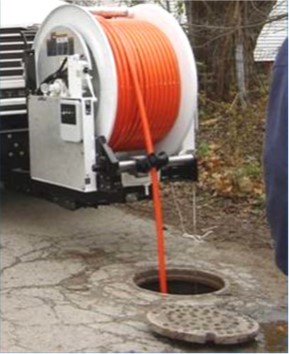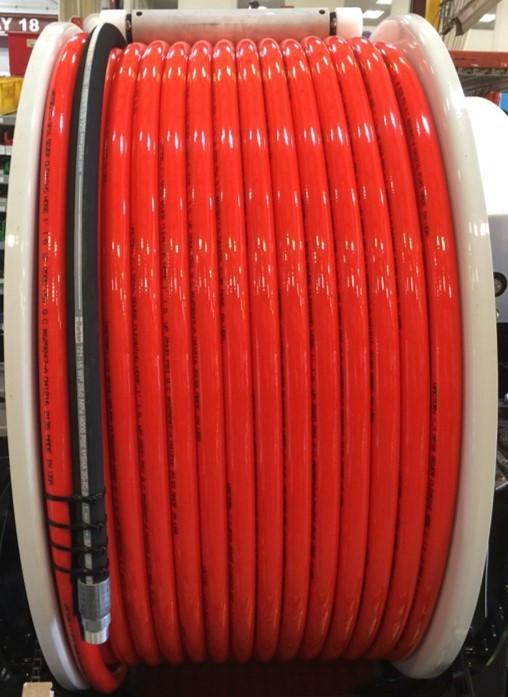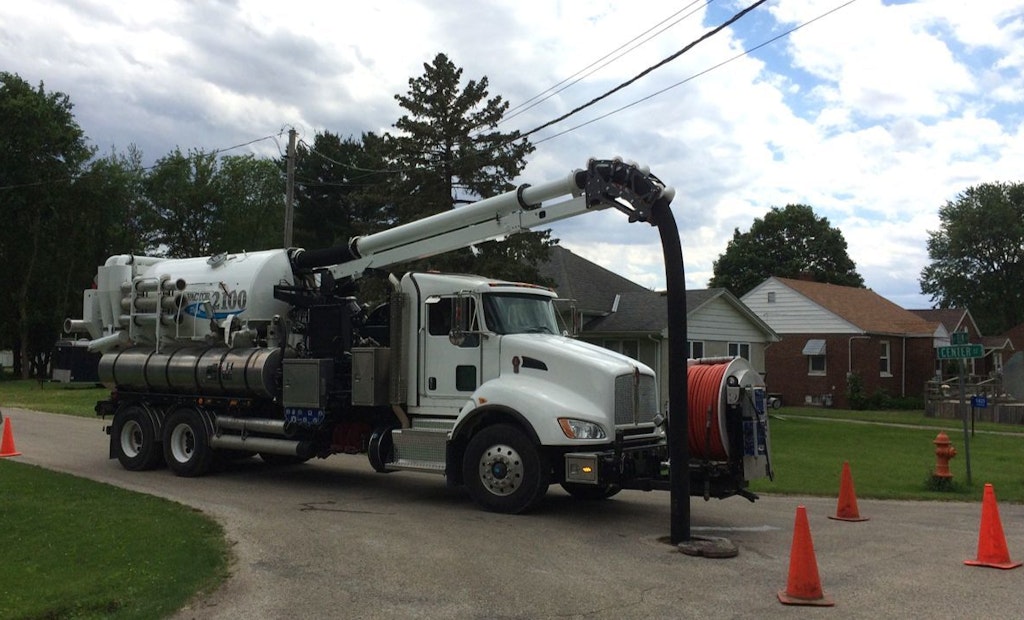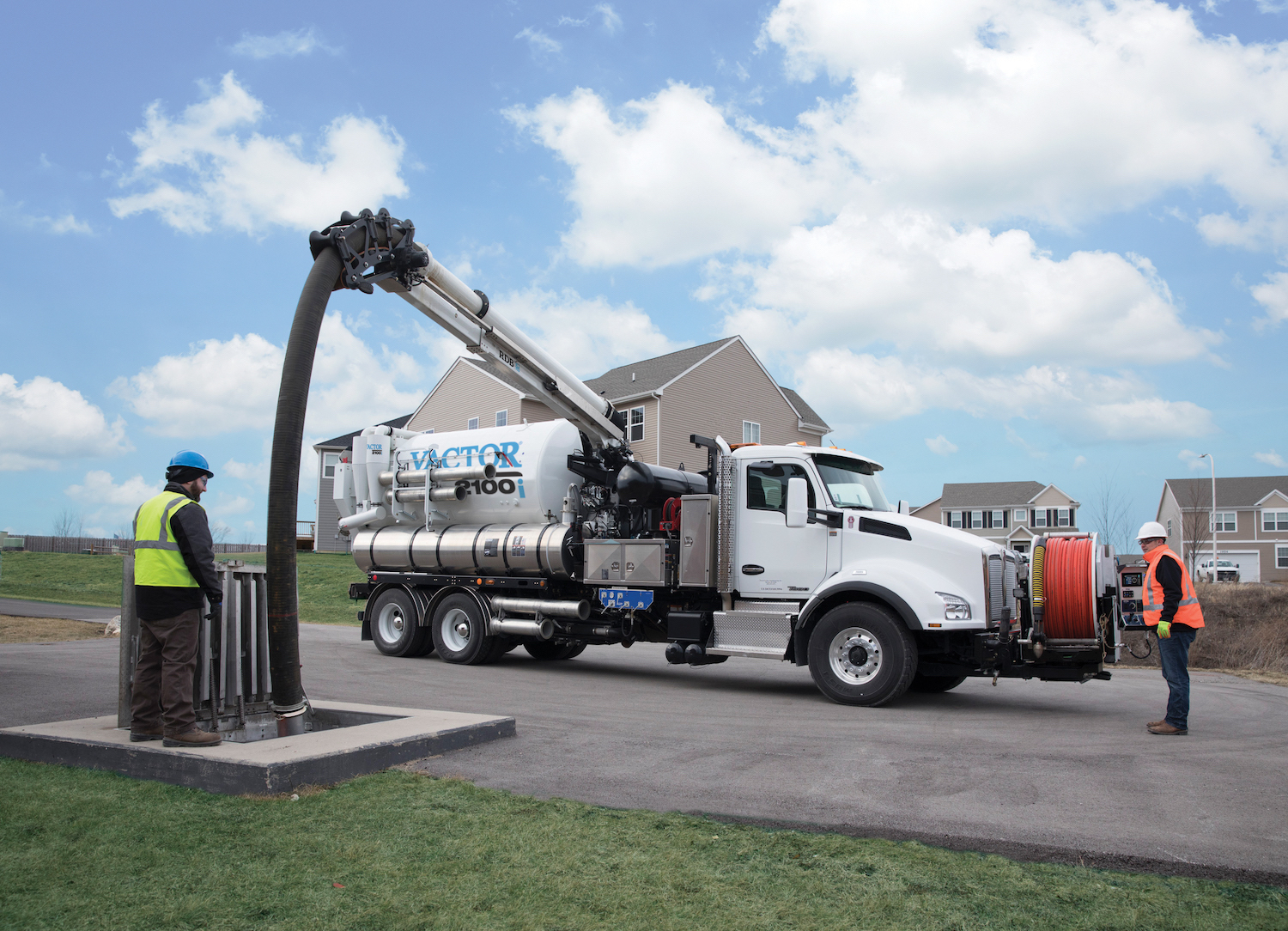Interested in Trucks?
Get Trucks articles, news and videos right in your inbox! Sign up now.
Trucks + Get AlertsAn experienced sewer equipment operator should have an understanding of available line cleaning technologies, tools and techniques that apply to the overall safety, jetting, vacuum and maintenance of their sewer cleaning truck.
In this first article in a three-part series, Vactor discusses the importance of safety and understanding the work environment before beginning a sewer cleaning job.
Be aware of your surroundings
As with any job involving heavy equipment, it’s always important to understand your work environment.
Know the terrain in which you are working and understand that weight will shift on the sewer cleaner as water is depleted and debris is contained. Be mindful of vehicular traffic around you and pay attention to any obstructions above the sewer cleaner, such as power lines, while operating a boom or while raising the body.
It’s also important to be aware of what is happening in the sewer. Use all your senses to make sure that things are cleaning properly.
Personal protective equipment
Knowing how to select, inspect and wear personal protective equipment, and knowing its limitations, can help protect you from hazards on the job when cleaning and maintaining sewers and catch basins.
Industry-wide practices for PPE generally include:
- ANSI Z89 hard hat (this is more of an employer or site-specific requirement)
- Hearing protection
- ANSI Z87 safety glasses with side shields
- Protective hand wear
- Protective foot wear
- Reflective safety vest
Air conveyance
Sewer cleaner operators must respect what they cannot see. An 8-inch opening at 15-inches Hg vacuum equals 350 pounds of force. A 10-inch opening at 15-inches Hg vacuum equals 550 pounds of force. The average person cannot escape a pull of 350 pounds — not to mention 550 pounds.
Air movement can pull loose clothing and human limbs inward until it creates a seal. When that happens, vacuum will build rapidly, drawing blood to the limb, which causes compartment syndrome (similar to what happens when you hit your finger with a hammer).
Water jetting
When it comes to safe use and operation of a water jetter, it’s important to protect the hose and remember that it stores tremendous energy. Never operate with a damaged hose.
When conducting routine inspections of the hose, always look out for:
- Exposed reinforcement
- Kinking or collapsing
- Blisters or bubbles
- Movement in fittings
- Fittings cutting into hose
- Shrinking hose size
Closely follow the established safety standards for repairing any hose you work with. Never mix manufacturers or pressure ratings. The manufacturers wrote the standard, so take their word for it. The protective cover identifies the pressure rating. The inner core defines the manufacturer. The fitting and repair tooling all have the manufacturer’s color code.
An incorrectly spliced rodder hose can fail and cause serious injury to the operator.
Helpful safety tips include:
- Never use the reel or the truck to pull the hose when stuck. You can prevent the hose from getting stuck by using proper cleaning techniques.
- You can also prevent turn-around of the hose in line with a rigid end that is longer than the pipe diameter.
- Always put the nozzle into the line before engaging flow. Never attempt to “find the line” and engage the system in a surcharged manhole. The rodder hose can turn around and come back out of the manhole, striking the operator and causing serious injury and, in some cases, death.
- Do not try to handle flow from an open rodder hose by hand.
- Do not attach hand-held devices to the end of the rodder hose. The potential thrust is too great to handle. Loss of control can result in a heavy object being whipped around.
Weights
It’s always important to be aware of how the weights change on a sewer cleaner. Understand how much water and debris you can carry legally and be aware of the DOT weight limit in your area of operation. Carrying debris raises the truck’s center of gravity and increases braking distance.
When possible, decant water from the debris body to help keep the center of gravity lower and to help increase the amount of debris that can be legally removed from the site. This allows for greater productivity and reduces material transfer in the body during stopping and accelerating.

Jetting
To achieve an ideal setup at the manhole:
- Make sure the hose, roller assembly, and work area are in a direct line
- Avoid side loading on the hose reel drum
- Make sure the rodder hose does not touch the manhole lip
- Use additional tiger tails if required
- Tiger tails
- Leader hose
- Guide fin
- Nozzles
The proper tools for jetting include:
Tiger tails
Any place where the hose has the potential to rub on a corner should be protected with a tiger tail. Depending on set up, it may take more than one tiger tail to protect the hose from unnecessary wear.
For example, there are certain situations where the only option is to operate away from the manhole, and in this case the hose should be protected from rubbing on the manhole lip or any sharp objects.

Leader hose
The leader hose bears the brunt of the load as it moves through the line and provides a visual indicator that the rodder hose is almost fully retracted. The leader hose will start the first bend down the line. There is a higher chance that the tiger tail may not be set during this bend.
The longer the leader hose, the more warning an operator will have that the nozzle is nearing the manhole upon return from the line.
Guide fin
The guide fin prevents hose turnaround, centers the nozzle in the pipe which leads to even cleaning on the top and bottom of the pipe, and extends the life of the nozzle body since it will not constantly be rubbing along the bottom of the sewer line.
Nozzles
The nozzle uses thrust to pull itself and the rodder hose up the line. When being pulled back by the hose reel, the nozzle scours the side of the pipe to remove debris, pulling the debris back to the manhole.
To learn more about sewer cleaning solutions available from Vactor Manufacturing, please visit www.vactor.com.







